To remove carpet glue from hardwood floors, use a commercial adhesive remover or a homemade solution of hot water and dish soap.
To use the commercial adhesive remover, follow the instructions on the product label and apply it to the glue stain with a scraper or a cloth. Let it sit for the recommended time before scraping or wiping it away with a damp cloth.
Mix equal parts hot water and dish soap in a bucket to make a homemade solution. Dip a sponge or a cloth in the solution and use it to gently scrub the glue stain.
You may need to apply the solution several times and let it sit for a few minutes to soften the glue before scrubbing.
After removing as much glue as possible, rinse the area with clean water and dry it thoroughly with a towel.
It’s important to be gentle when removing carpet glue from hardwood floors, as rough scraping or scrubbing can damage the wood.
If you need help with the best approach, it’s a good idea to test a small area before attempting to remove the glue from the entire floor.
Consider hiring a professional flooring contractor if the glue is stubborn or you’re concerned about damaging the wood.
Different Methods Of Removing Carpet Glue Off Of Hardwood Floors
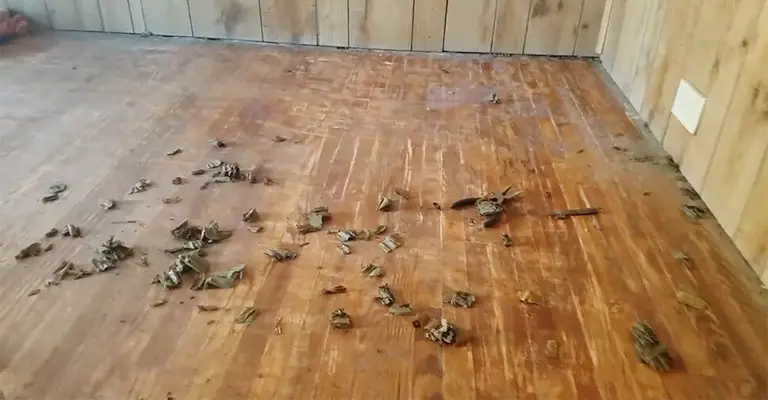
There is no doubt that hardwood floors are one of the most popular flooring options for homeowners across the country due to their durability and style.
In the past, homeowners often carpeted over their hardwood floors, but this was not always the case.
You may notice unsightly carpet glue left behind after removing the carpet to reveal the hardwood flooring underneath.
Your hardwood floors must be stripped of this glue before they can be restored to their former glory.
However, it must be done with care to avoid damaging your hardwood floors. Keep reading if you want to learn how to remove carpet glue from hardwood floors.
How Long Does It Take and Who Can Do It?
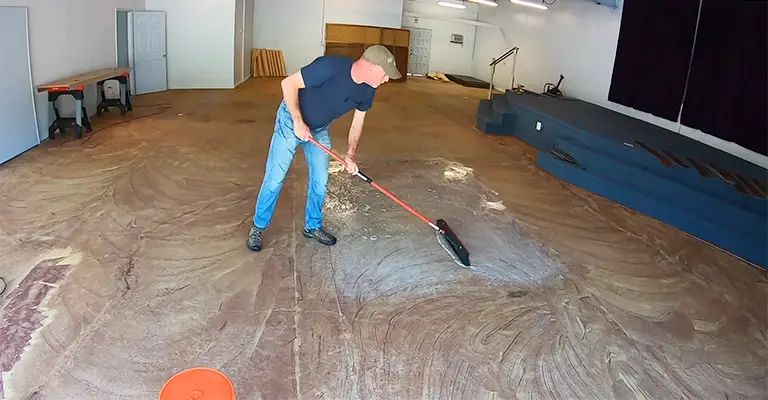
It should take about twenty-four hours or so for the entire process to be completed.
The actual work can be completed in the afternoon, but most of the time is spent waiting between steps. There is a little bit of a difference depending on the stubbornness and type of glue.
It is relatively easy for one person to accomplish the work. It will, of course, be easier, quicker, and more pleasant if more people are involved.
Being wholly and properly prepared is the most important aspect of any do-it-yourself project.
It is possible to cause more damage than good if you don’t have the right tools or do not do your research correctly. A professional can do the job better in this case if you hand it over to them.
However, if you do your research, stand up straight, and are willing to get your hands dirty, you should be able to do this on your own.
Evaluating The Situation
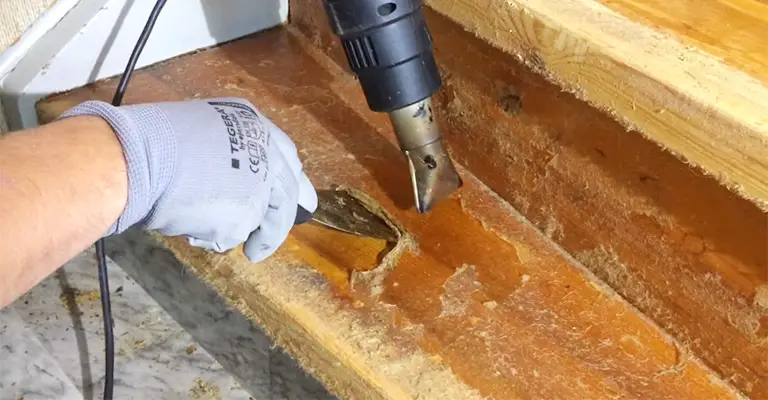
Make sure you closely examine the old glue before you begin your project. Here’s what you need to know about your enemy!
Due to the fact that carpet glue comes in a variety of types, they should each be eliminated differently.
In most cases, tar-based glues and adhesives are tan or brown in color. Using mineral spirit-based solvents is the best way to remove glues based on tar.
There’s a good chance you’re dealing with a carpet adhesive if the glue is yellow or light orange, which can be removed with adhesive remover.
Get Prepared
Second, you need to make sure you have the right tools. Choosing the correct solvent or adhesive remover is the first step.
Furthermore, you will need a plastic putty knife, a gentle scraper, an old towel or rag, rubber gloves, and a sturdy sponge.
As a backup, it might be helpful to have a heat gun, blow dryer, sandpaper, and a pot to boil water. Preparation of the room is the next step.
You should open any windows you can and maybe even turn on a fan to encourage circulation because of the strong chemicals you will be introducing. The gloves can now be put on, and you can begin to work.
Attack Glue with Chemicals and Solvents
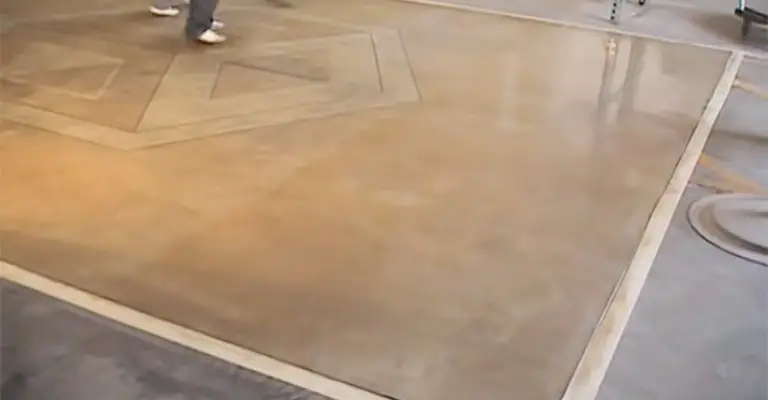
It is sometimes impossible to remove carpet glues from the floor by brute force because they are too firmly attached to the floor. Solvents can be used in these cases to weaken the bond of carpet glue.
To begin with, you will need to determine the type of carpet glue used on your hardwood floor. You should use mineral spirits to remove carpet glue that is tar-based.
Orange oil solvent should be adequate for all other types of carpet glue. Allow the solvent to work on the glue for a few minutes.
Using your putty knife, you can pry the remaining glue away after it has been sufficiently loosened.
A small area in the corner of the room is a good place to test the solvent or adhesive remover.
After you’ve cleaned this test area, check for any potential damage, and if none is present, continue with the rest of the room. It will be outlined by the product how long this process will take.
Whatever the case may be, it’s time for you to take a short break. If possible, you should take a break in a separate room so as to avoid settling chemical fumes.
Remove Adhesives with Elbow Grease
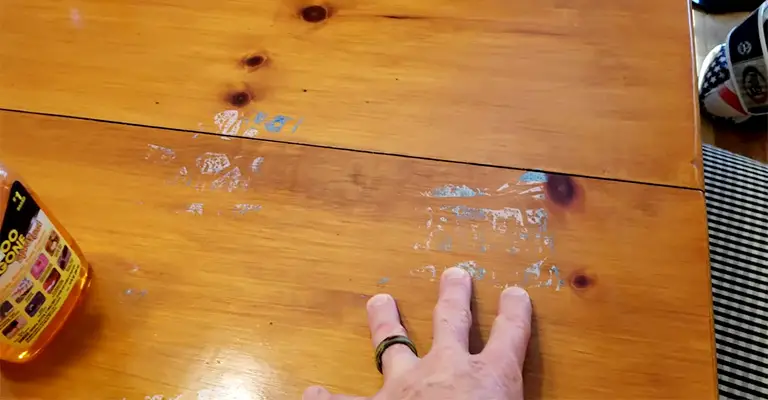
If you don’t mind getting your hands dirty, chipping away carpet glue manually is one of the most efficient but time-consuming methods for removing carpet glue from hardwood floors.
There are several benefits to manually removing carpet glue. As far as the primary benefit is concerned, it protects your floors from the type of discoloration that can occur with chemicals.
Make sure you only remove the carpet glue itself without damaging the floor beneath it using a plastic putty knife.
With a wet/dry vacuum cleaner, clean up the area once the glue has been removed. When staining the wood, sand the floor afterward may also be a good idea.
Clean Up
Whenever you do a project on your own, cleaning up is an important step. After rinsing and letting the area dry, you should let it dry completely.
A minimum of twenty-four hours should be given for drying and ventilation. As soon as the floor has dried and the room has been aired out, it’s time to consider the next steps.
Be Cautious About Damaging Your Floor
Sometimes, homeowners will resort to harsher chemicals or extreme physical methods to remove carpet glue when the previous two approaches have failed.
You should reconsider either of these options if you are considering them. You may be able to remove the wood glue, but the underlying hardwood floor is likely to suffer severe damage as well.
You will waste your time and money on repairs that will cost you thousands of dollars. The best way to remove your glue is to hire expert flooring contractors.
What about Using a Heat Gun and Scraping off the Glue?
In addition, this is where you can perform some serious troubleshooting. A number of potential follow-up methods exist if the prescribed way does not prove fully effective.
Alternative methods that involve heating glue are some of the bests. The first step is to soak towels in hot, boiling water and apply them to the glue.
Before removing the glue, lay the towels over it for a few minutes. In order for the glue to dissolve, it must be heated in order to loosen it.
If you want to remove the glue quickly, you can also use a heat gun to heat it, running it over each section just before you remove it. Ensure that the heat gun is held close to, but not touching, the glue.
This method is preferred by some people over the use of solvents. This video shows a solid how-to guide, although I have not tried it myself.
I Have Tried The Prescribed Method Several Times, And Some Glue Just Won’t Come Up. What Can I Do?
You should keep trying. The process sometimes takes a while. Changing up the method may help if the glue does not stick.
You are welcome to troubleshoot and improvise. Everyone’s needs are different, so what works for me may not work for you.
Depending on the age of the glue, the type of wood used for the floor, and many other variables, the amount of solution and elbow grease required may vary.
It is, however, primarily a matter of persistence. Make sure you do not let the glue defeat you.
Remove Carpet Glue From Hardwood Floors with Flooring Professionals
When you remove carpeting to reveal hardwood floors beneath, the unsightly residue of carpet glue can make you feel like you’ve hit the jackpot.
It is necessary to remove the remaining carpet glue from your hardwood floors to bring them back to their former glory.
It is best to hire a flooring professional to remove carpet glue from hardwood floors, even though you could do it yourself.
Final Words
Floor glue can often be removed only as a preliminary step. Now is probably the time to consider sanding the floor to remove any imperfections or small pieces of glue you may have missed.
Your hardwood floor will then need to be sealed and stained. Perhaps you’d like to lay down tiles.
When it comes to cleaning, the next step is determined by your ultimate goal. For example, it may be helpful to sand the floor with a light-grain sander before laying tiles.
If you intend to keep your hardwood floor, sanding lightly, and paying attention to aesthetics, can also be necessary steps. It is sealants and stains that make hardwood floors shine.






